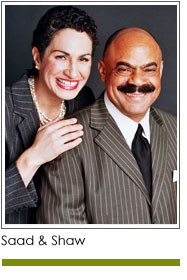 Pressure and stress can be the name of the game when it comes to nonprofit fundraising. That’s to be expected. But you don’t need to raise the stress level unnecessarily. Here is one way to decrease your stress.
Pressure and stress can be the name of the game when it comes to nonprofit fundraising. That’s to be expected. But you don’t need to raise the stress level unnecessarily. Here is one way to decrease your stress.
We recently had the opportunity to speak with a nonprofit leader who was concerned about how her development director was spending his time. She didn’t understand why the money wasn’t coming in. She was doing her part: she accompanied him to meetings and shared the organization’s mission, strategies, funding needs and impact. He wrote thank you notes to follow up on these meetings. But no checks arrived.
“Perhaps he isn’t focusing on the right things,” she asked. “He’s great in the meetings, but I feel he just doesn’t have a sense of urgency. Maybe I need to keep looking for the right person.” She paused and then lamented, “I could have saved a lot of money if I hadn’t hired him.”
We knew she was looking for answers, so we started with a few questions. “Is there a pool of qualified current and prospective donors your development director is working with? Are you expecting him to “find” people who will want to give to your organization?”
We quickly learned that the development director was focused on major gifts and was building relationships with new potential donors. We understood the challenge: the executive director did not fully understand the process of fundraising. She was focused on one of the last steps in the fundraising process: the ask. But the majority of fundraising – especially when it comes to major gifts – is comprised of cultivation activities. During this time development professionals – and board members, the executive director, and others – are learning where the donor’s interests intersect with the work of the nonprofit. They are working to determine the “right” ask amount, and discerning who would be the right person to ask for a gift.
Sometimes it is clear that a potential donor or funder is excited about your nonprofit, wants to get involved, and would like to discuss giving opportunities now. When that is the case, the development director will move quickly. In other instances, the time between initial visit and solicitation is often longer than anticipated. And, the bottom line reality is this: not everyone you solicit will make a gift.
It is this last reality that plays a critical role in setting goals and benchmarks for the work of fundraising professionals. You cannot look at your budget, determine the revenue gaps, use that amount as the fundraising goal, and evaluate your fundraising professional against that goal. This doesn’t take into account whether or not the goal is feasible. For example, is there a large enough pool of current and prospective donors with the interest and ability to give the gifts your organization needs to receive? Developing this pool is part of the fundraising process. Fundraising takes time. It is about building philanthropic relationships: donors are not ATM machines. Remember this and you will reduce your fundraising stress.
Note: Mel and Pearl Shaw will be presenting at Nonprofit Works 2017 Conference June 22nd in Jacksonville, FL. www.npworks2017.org.
Copyright 2017
For help growing your fundraising visit www.saadandshaw.com or call (901) 522-8727.











